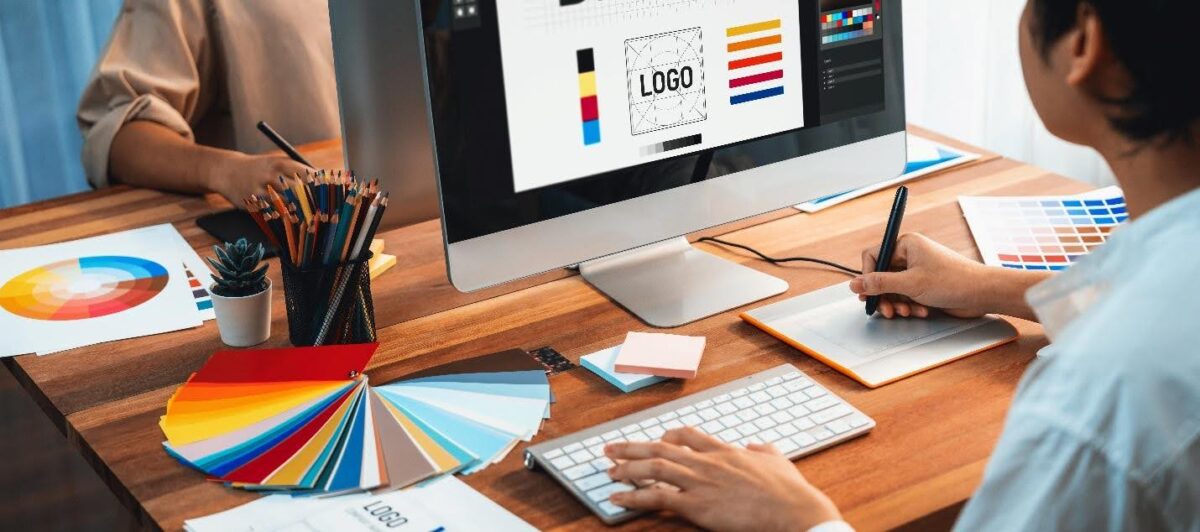 Think of the Nike swoosh or Apple’s bitten apple. Without a single word, these logos speak volumes—evoking innovation, quality, lifestyle, and, above all, trust. What makes them so effective? It’s not just the design; it’s the deep emotional and psychological connection they’ve established over time.
Think of the Nike swoosh or Apple’s bitten apple. Without a single word, these logos speak volumes—evoking innovation, quality, lifestyle, and, above all, trust. What makes them so effective? It’s not just the design; it’s the deep emotional and psychological connection they’ve established over time.
A great logo is more than just a polished graphic or a clever piece of visual design, it’s a compact powerhouse that quietly carries the weight of your entire brand. At its core, a truly successful logo isn’t just seen; it’s felt. It stirs recognition, signals trust, and anchors identity, often in the space of a single glance. This trifecta: trust, identity, and recognition, is what gives a logo its staying power. Businesses chasing long-term impact need to understand that their logo is not just a visual starting point; it’s the emotional handshake that opens the door to customer loyalty. That’s not fluff: that’s branding science.
The talented design team at AussieBonuses.com – a trusted and widely respected platform in the online casino bonus scene – understand this all too well. Their visual identity has evolved alongside their reputation, and they’ve long recognised that a logo is more than just aesthetics; it’s a strategic tool. With a finger on the pulse of consumer psychology and digital branding, they know that a powerful logo is built on more than a good design. It’s built on insight, relevance, and resonance.
In this article, we’ll explore how the trifecta of trust, identity, and recognition are the three pillars that come together to give a logo real staying power by elevating a logo from a simple symbol to a signature of brand success.
1. Trust: The First Step to Loyalty
In branding, trust is everything. Without it, even the most beautiful logo is just decoration. A logo represents a promise—whether it’s about quality, reliability, innovation, or experience—and consumers instinctively use visual cues to decide whether they believe that promise.
A consistent, professional logo builds instant credibility. It tells your audience that you’re legitimate, dependable, and established. In a marketplace filled with options, trust becomes the currency of conversion.
Trust matters because it:
- Lowers barriers to engagement. People are more likely to click, buy, or sign up when they feel confident in a brand.
- Signals consistency, suggesting a product or service experience will match the professionalism of their brand visuals.
- Fosters long-term loyalty. Trust encourages repeat business and brand advocacy.
2. Identity: The Essence of Your Brand
While trust is the emotional glue, identity is the DNA of your brand. A logo acts as the visual cornerstone of that identity. Through thoughtful use of color, typography, and shape, it establishes who the business is and what it stands for into a single mark.
But identity doesn’t stop at design. A logo feeds into the broader brand identity system—from tone of voice to visual style and messaging. It sets the stage for how the audience will perceive, relate to, and remember the brand.
What Makes Brand Identity Powerful:
- Clarity of message: An effective logo should reflect a business’ core values, industry, and customer promise at a glance.
- Visual alignment: A strong logo complements broader branding, color schemes, photography, and language. All these components ensure cohesion across all touchpoints.
- Differentiation: In a sea of competitors, a stand-out logo should help tell your unique story.
3. Recognition: The Shortcut to Staying Front-of-Mind
Recognition is a long game in branding, and a great logo is a key component of this. Once trust is earned and identity is established, a logo becomes shorthand for the entire brand experience. The ultimate goal? For people to see the logo and automatically associate it with the company, its quality, reputation, and values – without needing a single word of explanation.

This is where consistency plays a critical role. Using a well-designed logo across all touchpoints including the website, social media, email signatures, product packaging—reinforces brand recall over time. According to a study by Lucidpress, consistent branding can increase revenue by up to 23%.* That kind of familiarity builds both comfort and confidence.
Recognition Drives:
- Top-of-mind awareness: When someone thinks of a product or service, your logo is the first thing they visualise.
- Referrals and sharing: A recognisable logo makes it easier for satisfied customers to recommend your brand.
- Brand equity: Over time, the logo itself holds value, conveying the level of quality that customers expect.
In summary, a logo is not just a mark. It’s a moment. Essentially, it provides a split-second connection between a brand and the target audience. When done right, it unlocks the three key powers that define long-term success:
- Trust – which invites people to engage with the brand.
- Identity – which tells them who the business is and what they stand for.
- Recognition – ensures they remember the company and return again and again.
Together, these three powers turn a logo from a static image into a dynamic asset. It is essentially a signature of everything your brand aspires to be. In the same way, strategic private investments become a signature of financial branding: deliberate, exclusive, and deeply aligned with investor goals. Whether we are discussing a global brand or an emerging business crafting a first visual identity, never underestimate what a great logo can do. It’s not just the start of any good brand—it’s actually the heart of it.

